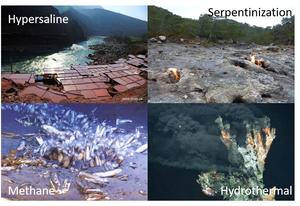17 Aprile 2019 - Molecular fossils in authigenic rocks-tracing microbial activity and the contribution of microbes in rock formation. - Dr. Daniel Birgel (University of Hamburg)

Seminari di geologia
Mercoledi 17 aprile 2019 alle ore 16.00 si svolgerà in aula Ruffini il seminario dal titolo
Molecular fossils in authigenic rocks-tracing microbial activity and the contribution of microbes in rock formation.
Dr. Daniel Birgel
Institute for Geology, University of Hamburg (Germany)
Lipid biomarkers (molecular fossils) are commonly used in organic-rich sediments. Many of the studies are based on molecular fossils of eukaryotic organisms. Usually, molecular fossils are transferred from the water column to the sediments and are used to monitor environmental changes (e.g., temperature, pH). Apart from these allochthonous molecular fossils, prokaryotes are active in sediments and leave behind molecular fossils as well. In contrast to phototrophic organisms, most benthic sedimentary prokaryotes are obtaining their energy by oxidation or reduction of organic or inorganic substrates. A peculiarity of some of the sediment-thriving prokayrotes is their ability to trigger in situ mineral precipitation. Authigenic rocks are often resulting in the metabolic activity of specific prokaryotes. Due to this peculiarity molecular fossils are rapidly enclosed in the mineral matrix and are protected from early (bio)degradation, and therefore can trace microbial activity back in time. Only thermal maturity can blur the microbial signatures entirely from the rocks.
Among the best examples of molecular fossils preserved in authigenic rocks are methane-seep carbonates, which are a product of the anaerobic oxidation of methane (AOM) performed by methane-oxidizing archaea and sulphate-reducing bacteria. Molecular fossils and their compound-specific isotopic signatures entombed in the carbonate matrix can be used to trace AOM in the past. Apart from methane–seep carbonates, also other authigenic mineral phases contain molecular fossil signatures, as for example phosphorites, evaporitic minerals in hypersaline environments, phototrophic stromatolites, and serpentinite-associated carbonates. Overall, authigenic mineral phases from various environments are excellent archives to describe former microbial activity in sediments.





